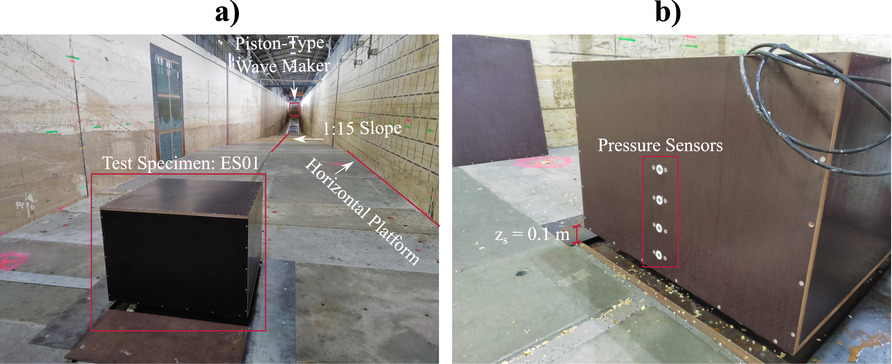Amongst extreme hydrodynamic events are bore- and surge-type flow motions that are observed in the context of storm surges induced by tropical cyclones, but also occur when tsunami or flash floods strike. Coastal houses built on elevated pile foundations have suffered less damages in recent extreme hydrodynamic events since the water could pass beneath the floor slabs decreasing the exertion of forces onto structures. To date, research pertaining to horizontal and vertical forces on elevated structures is still scarce. Specifically, previous research may not be applicable to cases of bore-type inundation interacting with elevated coastal structures. This work hence aims to model non-elevated and elevated coastal structure, and to deepen insight into forces with a focus on the structural elevation. For this purpose, large-scale experimental tests were performed on a uniform 1:15 slope in combination with an adjacent horizontal plane. Idealized residential buildings on a length scale of 1:5 were designed to simulate loading conditions of broken solitary waves on slab-on-grade and elevated buildings. A wide range of horizontal forces between 0.1 and 10 kN, vertical forces between 0.5 and 7.5 kN and overturning moments up to 4.5 kNm were measured. In accordance with the experimental results, design equations were derived.
The paper was published in Coastal Engineering Journal on January 06, 2022.
Further information can be found on Researchgate.
Clemens Krautwald, Hajo Von Häfen, Peter Niebuhr, Katrin Vögele, David Schürenkamp, Mike Sieder & Nils Goseberg (2022). Large-scale physical modeling of broken solitary waves impacting elevated coastal structures, Coastal Engineering Journal, DOI: 10.1080/21664250.2021.2023380

